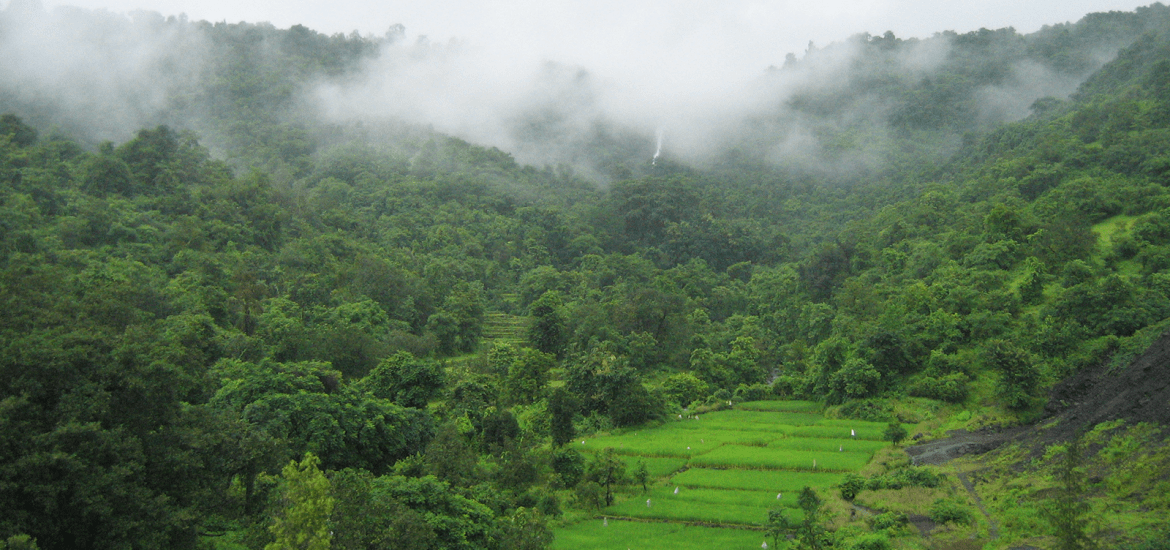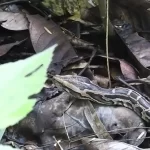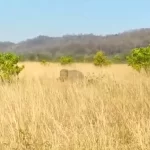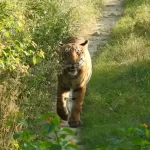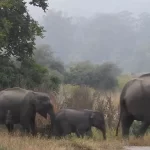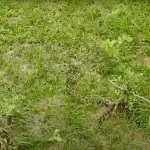The scorching summer months of May & June will soon dramatically give way to a different weather. The rains, when they arrive with heavy force in the hilly terrain of Corbett, will create mayhem along with the road networks within the park and will provide a much-needed relief from human intrusion.
The first few showers trigger breeding patterns of the area’s herbivore and avian species. A new green envelops the trees, while the undergrowth turns lush with sprightly shoots and new food resources. Dry riverbeds and channels now course with tumbling, muddy waters, deep pools and dark necklace-shaped cloisters of fish fingerling.
DANGEROUS TIME
This period is particularly of major concern for park authorities. With collapsing internal road networks, the rains add onto the vulnerability. The anti-social elements are bent upon damaging nature in several different ways. Tourism forms an important conservation tool at this time of the year as the safari-goers keep a check on illegal activities.
Closing the park has ecological significance, no doubt, as it provides significant time of undisturbed peace for wildlife. However, less number of visitors present in the park actually acts as a deterrent to anti-social elements. An intense debate over the pros and cons of human interference has finally made way for a controlled visitor presence in the national park during the monsoon season. This could be of great importance in providing tourist and forest guard patrolling in some areas of the park.
The Jhirna tourism zone is situated about 2km from Jim’s Jungle Retreat and is open for the entire year. It is concluded by the forest officials that limited night drives with forest guards in every vehicle would be helpful to the park’s dwellers, providing much-needed patrolling at a dangerous time for wildlife.

OF DEER HAREMS AND BIRD NESTS
As the village folk get busy with their seasonal planting determining on the amount of rain, the forest echos the rutting calls of stags with an increasing frequency. Rains also bring with them squads of insects, their presence in the dense vegetation forcing animals to take refuge in open areas, especially in the teak plantations and on highways.
There is a better chance of animal sightings in open areas during the safaris.
Corbett’s ungulates such as deer, boars and antelopes indulge in the breeding, which is triggered by the first few showers of rain. Male deer like the cheetal and sambhar seduce and entice the females by a fabulous display of their antlers by garlanding them with the profuse vegetation of the monsoon. Except for the kakar, also known as the barking deer, most deer species are now making their harems. For the rest, males fight to display their dominance by locking their antlers with a challenger, which is one of the most common sights in the jungle.
Many of the smaller birds start to breed at this time and mother and chicks will be a common sight in a few weeks’ time. The profuseness in ground vegetation and a rising insect population provide ample feeding opportunity to insectivorous birds at this crucial breeding time. Quails, patridges, pheasants, raptors, owls, parakeets, barbets, etc. are seen with their chicks in the beginning of the season while many of the cuckoos are busy finding other bird-nests to lay their eggs.

This also is the duration to look for new nests on the ground. The Eurasian thick-knee, one of the most conspicuous birds on the ground, gets busy distracting the attention of jackals approaching towards its nest by enacting injured by putting a wing under one of its feet
TIGERS & TUSKERS
With the nullahs and other water courses cutting forest roads and highways across, flash floods are increasingly common. Solitary elephant tuskers start their courting rituals at this time while determined to contest to protect their harem. During the season of monsoon, herds of elephants move ahead along with a dominant male in the center begin their search for fodder. The Jhirna zone experiences huge number of elephant sightings during these times. The excitement builds when loner makhanas – giant but tusk-less males – try and join a herd but are strongly rebuffed.
As far as tigers are concerned, they do not have a specific breeding time and thus breed at any time yearlong depending upon the availability of water and prey. Consumption of water helps them keep cool during this sultry weather. However, dense vegetation and availability of excess water leads to lesser tiger sightings. Our walking safaris in the forest alongside Jim’s Jungle Retreat, a wildlife safari resort, have fetched excellent tiger sightings in the past.
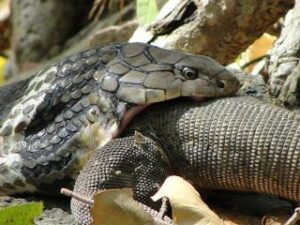
In the meantime, as the rains fill up snake burrows, forcing them out, there are sufficient young frogs to feast on as they too begin to emerge from newly-created monsoon ponds. Sightings of King Cobra and python increase during this time. A recent sighting of a King Cobra killing and swallowing a Monitor lizard happened just about a week ago and was witnessed and photographed by one our guests, Manik Kaur Harika at Jim’s jungle Retreat- a safari resort in corbett. Thanks much for your photographs! A rare sight indeed.
